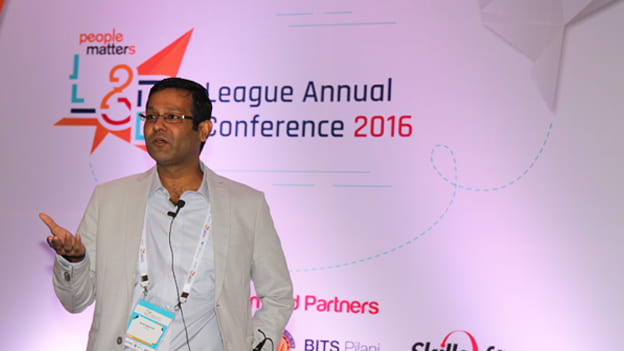Change in learning curve in the age of disruption

Disruption has caused redundancy of skills, creating the need to constantly evolve and learn new skills. We need to upskill and reskill ourselves continuously. Today, the L&D teams have very good tools at their disposal. Their toolkit has drastically expanded in scope, availability and accessibility in order to pace with this constant change.
Most of us when we were in our school and college, we assumed that learning that we got then, would take us through bulk of our career. That is changed massively now because of disruption. Old paradigm was that one should know -how to run operations. So, people who would do well in the industry were those- who could manage people and lead large teams. Also, those who could understand technology well. This scenario has completely changed today as people should now know- how to partner with machines. They have to learn how to use robotics and learn use of natural language processing. These things are becoming more and more relevant. It is no more intuitive now. One needs to figure out ways to really substantially change their skillsets or else they will become irrelevant. This shift is now perhaps going to happen every 10-15 years or some say it might happen every 5-6 years. That’s a huge disrupter, keeping in view, how L&D is going to provide that value added curve through.
Another question arising of this context is - What percentage of knowledge for your job, you currently possess? Research shows that in 1960’s it used to be 90%. Most people felt that they have most of the information they require to do their work. Today, people believe that they have less than 50% information with them. This again is massive impact in terms of how companies and individuals work.
In the present scenario, learning is discretionary and easily accessible outside office systems. Our learning ecosystem extends beyond organizational trainings to non-traditional assets. Our new age source model includes open source content , knowledge management , collaboration tools and peer networks , formal classroom training , expert forums and search engine etc.
Collective Intelligence
Two big things have arisen because of this disruption – one is the whole concept of collective intelligence and the other is peer networking through Wats App, Sharepoint , Chatter, Slack and others. Employees especially millennials are preferentially using these networks to connect with each other rather using traditional mode - e-mails for the same.
Under collective intelligence, it is important to partner with lot many companies for solutions. Not just this, we also need to partner with our competitors in order to seek solutions for the market. We need to establish a strong collaboration so that anybody who needs any information at any time to solve a specific problem can reach out to a broader group.
Substantial change in learning ecosystem
Due to substantial change in learning ecosystem, lots of things have now come under L&D umbrella. They now need to run multiple things including management, training and collaboration for the company. They all are germane and relevant to how people can actually learn and develop. All these are inter-linked and are important factors for enhanced learning.
How L&D teams are changing today?
First, CLOs need to learn knowledge management and collaboration. They need to come together to deliver solutions.
Second, L&D leaders need 21st century skills i.e. collaboration, innovation, creativity, design thinking and ability to curate. I think curation is most important. All information is out there. The challenge is to access more information from different learning platforms and curate a playlist of the all the knowledge gathered. Design thinking is another important factor which makes user experience better.
Third, Coaching becomes increasingly important in disruptive situations. As world is changing super- fast, coaching is essential to thrive and progress in this transformational phase.
Fourth, Partnership with Chief Information Officer is needed to make strides in user experience.
Fifth and last is linking learning to performance. These two should be significantly interlinked.
This story has been built from the session delivered by Amit Aggarwal, CLO of Genpact based on theme ‘Incredible exciting new world of learning’ at #L&DLeaugue Annual Conference 2016 on 20th October, 2016












